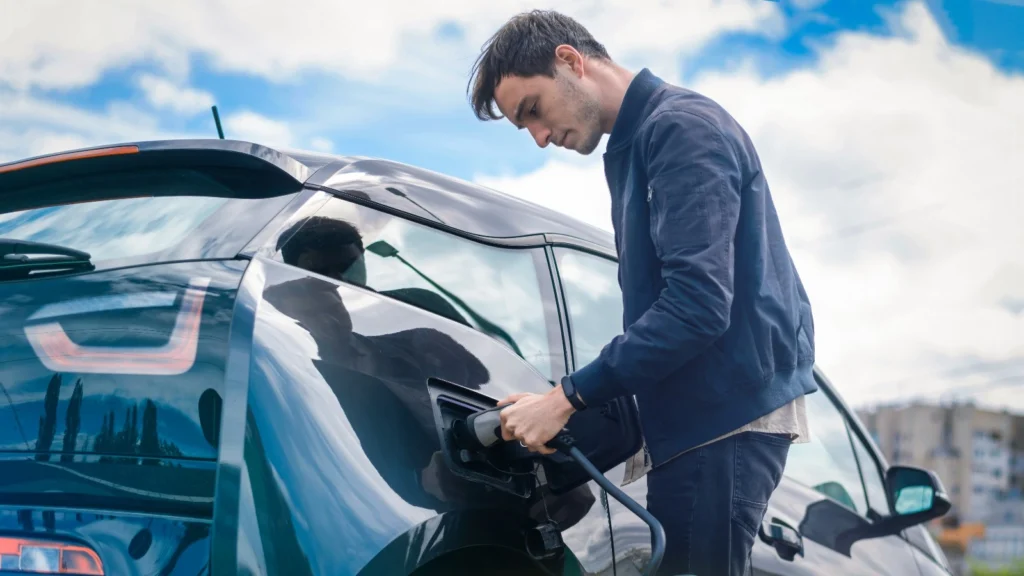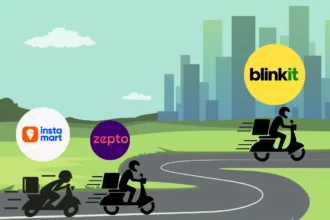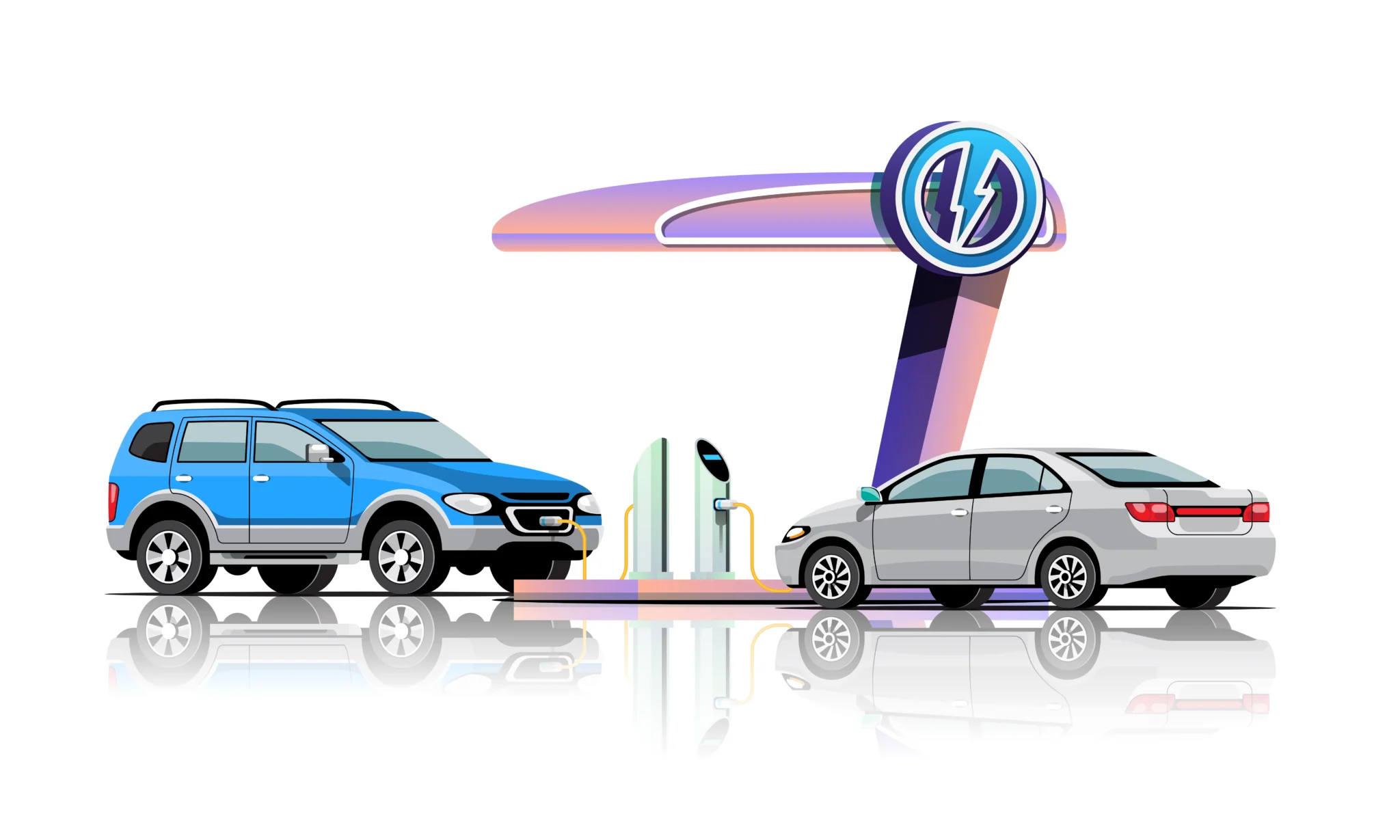Estimated Reading Time: 23-27 minutes (4,673 words)
Introduction
India is currently witnessing one of the biggest shakeups in automotive history — a front-row, popcorn-worthy battle between the familiar vroom of petrol engines and the silent-but-ambitious whirr of electric vehicles (EVs). With EV showrooms popping up in every major city, fast chargers multiplying faster than chai stalls near an exam center, and fuel prices refusing to calm down, the big question echoing in every buyer’s mind is simple: “Are EVs actually cheaper than petrol cars, or is it just hype?”
This guide cuts through the marketing noise and gives you a real, data-backed, fully practical comparison of the true cost of owning a petrol vehicle vs an electric one in India. We’ll dive into everything that really affects your wallet — daily fuel vs charging costs, on-road price differences, servicing bills, battery life, replacement expenses, roadside issues, resale value, and the big one: your 5–10 year total cost of ownership (TCO). Whether you’re buying a scooter for city zooming, a hatchback for office runs, or your first family EV, this breakdown will show you exactly where you save money, where you might spend more, and how much your driving pattern truly matters.
By the end, you’ll have a clear, no-nonsense understanding of which one—petrol or EV—wins for your lifestyle, your city, and your commute. So buckle up (or plug in), because we’re about to decode India’s most heated automobile debate with simple numbers, relatable examples, and expert-powered insights. Let’s get started.

Petrol vs EV Adoption in India
- EV sales (FY 2024–25): 2 million+ units, with two-wheelers and three-wheelers dominating.
Electric scooters account for nearly 60% of total EV sales, fuelled by lower running costs and dense urban usage. E-rickshaws and e-autos continue to lead last-mile mobility, especially in Tier-2 and Tier-3 cities. Passenger EV cars — though still a smaller segment — are growing at 70–100% YoY as more models enter the ₹10–20 lakh bracket. - Total EV stock in India: 5.4 million+ registered EVs on the road.
This includes 2Ws, 3Ws, cars, buses, and LCVs. States like Uttar Pradesh, Maharashtra, Karnataka, Tamil Nadu, and Delhi make up over 50% of the national EV base thanks to strong policy pushes, subsidies, and better charging infrastructure. - Petrol prices remain high nationwide: ₹95–₹110 per litre across major cities.
Even smaller cities hover around ₹92–₹105. With global crude price volatility and heavy excise duties, petrol prices are expected to stay on the higher side — directly impacting daily commuting costs for 2W and 4W petrol owners. - EV charging cost (home charging): ₹6–₹9 per kWh in most Indian states.
Residential tariffs vary by state, but EV owners typically spend ₹60–₹120 for a full charge depending on battery size. Some DISCOMs now offer dedicated “EV tariff slabs” that are cheaper during night hours, pushing costs even lower. - Public fast-charging: ₹16–₹24 per kWh on average.
Fast chargers cost more due to infrastructure and power demand charges, but they offer quick top-ups for long drives and emergencies. Still, even fast charging is often cheaper than petrol per kilometer. - EV economics vary by city, battery size, and driving pattern — but operating costs are consistently 60–80% lower than petrol vehicles. Petrol vehicles typically cost ₹3–₹7 per km (depending on mileage and traffic), while EVs run at ₹0.8–₹1.5 per km with home charging. Cities with heavy traffic, short commutes, and expensive fuel prices see the fastest EV savings.
Cost Components to Compare
To truly understand whether an EV or a petrol vehicle is cheaper, you must compare all major cost pillars — not just fuel vs charging. Here’s a breakdown of each component that impacts long-term ownership:
1. Upfront Cost
- Petrol vehicles:
Petrol cars and two-wheelers generally come with a significantly lower showroom and on-road price. Their manufacturing is mature, components are cheaper, and there’s no expensive battery pack driving up costs. - EVs:
Electric vehicles cost more upfront because the lithium-ion battery alone makes up 30–50% of the vehicle’s manufacturing cost. Even so, prices have been dropping as local battery production ramps up and brands like Tata, Ather, Ola, and MG scale manufacturing. Some states also offer EV subsidies that partially offset the higher purchase price.
2. Running Cost
- Petrol:
Running costs depend heavily on fuel price (₹95–₹110/litre) and vehicle mileage. For most petrol scooters and hatchbacks, the per-km cost ranges between ₹3.5 to ₹8 per km depending on traffic and driving style. - EV:
EVs depend on electricity tariffs, which are much lower and more stable.
- Home charging: ₹6–₹9 per kWh → ₹0.8–₹1.5 per km
- Public fast-charging: ₹16–₹24 per kWh → ₹2–₹3 per km
This makes EVs 60–80% cheaper to run, especially for daily city driving.
- Home charging: ₹6–₹9 per kWh → ₹0.8–₹1.5 per km
3. Maintenance
- EVs have 60–70% fewer moving parts than petrol vehicles — no engine oil, no clutch, no spark plugs, no exhaust system, no timing belt.
- As a result, service visits are fewer, and bills are significantly lower.
- For most EVs, yearly maintenance primarily involves:
- Tyre rotation
- Brake pad check
- Coolant (battery thermal system) check
- Software updates
- Tyre rotation
- Petrol vehicles, meanwhile, require regular oil changes, filters, engine tune-ups, and clutch/gearbox maintenance.
4. Battery Replacement
- EV batteries typically last 7–10 years or 1,50,000–2,00,000 km, depending on usage and climate.
- Replacement cost can be 25–40% of the EV’s price, though this is expected to drop significantly by 2027–2030 as local cell manufacturing expands.
- Most manufacturers now offer 8-year / 160,000 km battery warranties, reducing long-term risk for buyers.
5. Resale Value
- Petrol vehicles still have a large and well-established resale market due to familiarity, easy servicing, and widespread fuel availability.
- EV resale value is improving rapidly, thanks to:
- Longer battery warranties
- Better brand trust
- More EV-friendly policies
- Lower operating costs that appeal to urban buyers
- Longer battery warranties
- In metro cities, used EVs are now seeing resale depreciation rates similar to petrol cars.
6. Charging Infrastructure / Convenience
- Home charging is the most convenient and cheapest option — just plug in at night and wake up with a full “tank.”
- Workplace charging is increasing in tech parks, malls, gated societies, and offices, reducing range anxiety even further.
- Public charging is growing fast, but costs more due to fast-charger infrastructure expenses. Public chargers are ideal for long-distance travel or quick top-ups.
- Petrol refueling is faster but dependent on regular trips to fuel stations.
Real Charging Cost vs Petrol Cost in India
When comparing EVs and petrol vehicles, running cost is the biggest game-changer. Below is a detailed, India-focused breakdown of per-km costs using realistic mileage, tariff, and consumption numbers.
🚗 Petrol Running Cost — Real Example (Hatchback)
Vehicle Type: Popular petrol hatchback (e.g., Swift, Baleno, i20)
City Mileage: 13–17 km/litre (we’ll use 15 km/l)
- Mileage: 15 km per litre
- Petrol Price (average metro): ₹105 per litre
- Cost Per Km Calculation:
₹105 ÷ 15 = ₹7.0 per km
→ Actual range: ₹6.2 to ₹8.5 per km depending on city, traffic, and AC usage.
Why petrol costs fluctuate:
- Prices vary by city (Delhi vs Mumbai vs Chennai).
- Mileage drops sharply in dense traffic.
- Fuel prices have no upper cap — volatility is high.
⚡ EV Running Cost — Home Charging (Most Common Scenario)
Vehicle Type: Compact EV (e.g., Tata Tiago EV, MG Comet EV)
Real-world consumption: 0.11–0.15 kWh per km (we use 0.12)
- Energy Consumption: 0.12 kWh per km
- Electricity Tariff (home): ₹6–₹9 per kWh (we use ₹7)
- Cost Per Km Calculation:
0.12 × ₹7 = ₹0.84 per km
→ Actual range: ₹0.70 to ₹1.2 per km across Indian states.
Why home charging is cheapest:
- Lower residential tariffs
- No GST + no commercial markup
- Overnight charging convenience
- Controlled environment = higher efficiency
⚡ EV Running Cost — Public Fast Charging
Public charging is more expensive because fast chargers require heavy infrastructure, cooling systems, and commercial electricity tariffs.
- Fast-Charger Tariff: ₹16–₹24 per kWh (we use ₹18)
- Cost Per Km Calculation:
0.12 × ₹18 = ₹2.1 per km
→ Actual range: ₹1.8 to ₹3.2 per km depending on charger type and city.
Why fast charging costs more:
- Higher installation + maintenance cost
- Commercial electricity tariff
- Operator profit margin
- GST on charging services
Still, even at public charging rates, EVs remain cheaper than petrol on a per-km basis.
🔥 Quick Comparison (Per Km Cost in India)
| Mode | Cost per km | Difference vs Petrol |
| Petrol Car | ₹7.0/km | — |
| EV (Home Charging) | ₹0.84/km | ~88% cheaper |
| EV (Public Fast Charging) | ₹2.1/km | ~70% cheaper |
💡 Key Insight
For daily city driving (the majority of Indian use cases), 90–95% of EV users charge at home, making electric vehicles dramatically cheaper to run compared to petrol vehicles.
Maintenance Comparison
Maintenance is one of the most underrated areas where EVs save a massive amount of money. Because electric vehicles have fewer moving parts and no combustion engine, there’s much less to service, replace, or repair.
Below is a component-by-component comparison of EVs vs petrol vehicles in India.
🔧 Component-Wise Maintenance Breakdown
| Component | Petrol Vehicle | Electric Vehicle (EV) | Why It Matters |
| Engine Oil | ✔ Required every 5,000–10,000 km | ❌ Not needed | EVs have no engine, so no oil, no oil filter, no engine tune-ups. |
| Air Filter | ✔ Must be cleaned/replaced periodically | ⚪ Minimal (cabin filter only) | EVs don’t need an engine air filter; only a cabin AC filter. |
| Transmission / Gearbox | ✔ Needs periodic checks, sometimes oil changes | ⚪ Very minimal (single-speed transmission) | EVs have no clutch, gearbox, or complex transmission components. |
| Coolant | ✔ Required for engine cooling | ✔ Required for battery thermal management | EV coolant changes are less frequent compared to petrol engine coolant cycles. |
| Spark Plugs | ✔ Needs replacement every 20,000–40,000 km | ❌ Not needed | One of the biggest consumables in petrol vehicles — EVs eliminate it entirely. |
| Clutch Assembly | ✔ High wear, expensive repairs (especially in city traffic) | ❌ Not present | EVs are automatic by design, with zero clutch components. |
| Exhaust System | ✔ Includes catalytic converter, muffler, sensors | ❌ Not applicable | No combustion = no emissions system or exhaust components. |
| Brake Wear | 🔺 High wear due to engine braking limitations | 🔻 Low (regenerative braking recovers energy) | EV brakes last 2–3× longer than petrol brakes. |
| Belts & Hoses | ✔ Multiple belts (timing belt, serpentine belt) | ⚪ Fewer belts and simpler setup | Reduced number of wearable rubber components. |
| Annual Service Visits | 2–3 per year | 1–2 per year | EVs have much simpler service checklists. |
💰 Annual Service Cost Comparison (India)
| Vehicle Type | Typical Yearly Maintenance Cost |
| Petrol Car | ₹7,000 – ₹12,000 per year |
| Electric Car | ₹3,000 – ₹5,000 per year |
Why EV maintenance is dramatically cheaper:
- No oil, clutch, gasket, valves, fuel pump, gearbox, spark plugs
- Software-driven diagnostics reduce labour cost
- Less brake wear due to regenerative braking
- Fewer failure points = fewer unexpected workshop visits
📉 Total Savings Over 5 Years
EV Maintenance Savings:
➡️ 40–60% lower maintenance cost over 5 years
➡️ Potential lifetime savings of ₹25,000–₹60,000 (cars)
➡️ For 2-wheelers, savings can reach ₹10,000–₹20,000
⚡ Quick Insight Box
Did you know?
Most EV owners in India report less than 1 major workshop visit per year, compared to petrol vehicles which often need 2–3 routine services plus additional wear-and-tear repairs.
Battery Replacement Cost
Battery replacement is one of the most important long-term cost factors for EV owners. While EV batteries used to be extremely expensive a decade ago, prices have dropped sharply due to better chemistry, large-scale manufacturing, and India’s push for local battery production.
Below is a detailed breakdown by vehicle type:
🔋 1. Small EVs (Electric Scooters & Motorcycles – 2W)
- Typical Battery Capacity: 2–4 kWh
- Battery Type: NMC/LFP lithium-ion
- Replacement Cost: ₹15,000 – ₹35,000 (depending on brand and kWh)
Examples:
- Ola S1 / Ather 450X: ₹22,000–₹30,000
- Hero Electric / Ampere: ₹15,000–₹22,000
- Ultraviolette Performance Bikes: ₹25,000–₹40,000
Why 2W battery costs vary:
- Premium brands use higher-grade cells
- Some offer detachable batteries, which cost slightly more
- LFP batteries last longer but cost slightly more upfront
🚙 2. Electric Cars (Hatchbacks & Compact EVs)
- Typical Battery Capacity: 17–30 kWh
- Replacement Cost: ₹80,000 – ₹2.5 lakh
Examples:
- Tata Tiago EV: ~₹90,000–₹1.2 lakh
- MG Comet EV: ~₹1.2–₹1.6 lakh
- Tata Tigor EV: ₹1.5–₹2.2 lakh
Why car battery costs have dropped:
- Tata and MG use increasingly localized battery packs
- India now manufactures LFP battery packs domestically
- Global lithium prices declined ~35–40% since 2022
🚘 3. Electric SUVs (Nexon EV, MG ZS, BYD, Hyundai EVs)
- Typical Battery Capacity: 30–50 kWh
- Replacement Cost: ₹2.5 lakh – ₹4 lakh
Examples:
- Tata Nexon EV: ₹2.8–₹3.2 lakh
- MG ZS EV: ₹3–₹4 lakh
- BYD Atto 3: ₹3.5–₹4 lakh
Why SUV battery replacement is costlier:
- Larger kWh pack = higher material cost
- More advanced cooling systems
- Premium brands import battery modules
🧪 Battery Life Expectancy
Modern EV batteries are designed to last 7–10 years or 1.5–2 lakh km, thanks to advanced BMS (battery management systems) and safer cell chemistry.
Real-world life expectancy in India:
- 2W EV battery: 6–8 years
- Compact car battery: 7–10 years
- SUV battery: 8–12 years (due to better cooling and larger packs)
🛡️ EV Battery Warranty (Industry Standard)
Most reputable EV manufacturers now offer:
✔ 8-year / 160,000 km battery warranty
(Whichever comes first)
This covers:
- Capacity drop (usually below 70%)
- Battery module failures
- Thermal management faults
Brands offering 8-year warranties:
- Tata
- MG
- Hyundai
- BYD
- Ather
- Ola (select variants)
This significantly reduces the financial risk for buyers.
📉 Battery Prices Will Continue to Drop
Industry forecasts (BloombergNEF, IEA) indicate:
- Battery costs to fall 30–40% by 2030
- India’s local cell manufacturing projected to increase by 5× by 2027
- LFP becoming more common → cheaper and longer lasting
Meaning:
A ₹3 lakh battery today may cost ₹1.8–₹2 lakh by 2030.
🔥 Quick Insight Box
Good news:
Most EV owners do NOT need to replace their battery within the first 8–10 years thanks to long warranties and improved battery health management.
Resale Value: EV vs Petrol
Resale value is a major deciding factor for Indian buyers, especially in the ₹5–15 lakh segment. Historically, petrol vehicles have dominated the used market — but EVs are quickly catching up as technology matures and buyer confidence grows.
Below is a detailed look at how resale value compares today and what the trend will look like by 2030.
🚗 Petrol Vehicle Resale — Stable & Predictable
Petrol cars and two-wheelers still enjoy consistently strong resale value because:
- India has a huge second-hand vehicle market (over 6 million used cars sold annually).
- Petrol engines are familiar and easy to service anywhere.
- Spare parts availability is widespread, even in Tier-3 and rural markets.
- Buyers trust petrol vehicles for long-distance and long-term reliability.
- No worries about battery degradation, charging setup, or EV-specific failures.
Typical petrol car depreciation:
- Year 1: 15–20%
- Year 3: ~35%
- Year 5: ~50%
Even after new EV-focused policies, petrol resale value remains more predictable due to decades of consumer familiarity.

⚡ EV Resale Value — Rapidly Improving
EV resale used to be weak due to battery concerns and low consumer awareness. But things have changed dramatically in the last 3–4 years. Today, EV resale prices are rising because of:
1️⃣ Longer warranties
Most EVs now come with 8-year/160,000 km battery warranties, reducing buyer fear about battery replacement.
2️⃣ Improved battery chemistries (LFP & NMC)
Modern LFP and NMC batteries degrade much more slowly, often retaining 75–85% capacity even after 7–8 years of use.
3️⃣ Lower running cost = higher demand
With fuel costs skyrocketing, used EVs are attractive due to:
- ₹0.8–₹1.5 per km running cost
- Low maintenance requirements
- Lower moving parts = fewer failures
4️⃣ Rising infrastructure confidence
Public chargers, home charging, and society approvals have expanded, making second-hand EV ownership more practical.
5️⃣ Better brand trust
Indian buyers now trust brands like Tata, MG, Hyundai, Ather, and Ola, which have proven EV track records.
📉 Current Depreciation Trend (2024–25)
| Vehicle Type | Depreciation After 3 Years |
| Petrol Car | ~35% |
| EV (Compact) | ~40–45% |
| EV (SUV) | ~35–40% (better than small EVs) |
Insight:
EVs still depreciate slightly faster than petrol vehicles today — especially smaller budget EVs — mainly because buyers worry about battery life.
But the gap is shrinking fast.
📈 The 2030 Outlook: EVs Will Likely Overtake Petrol
Most global and Indian market forecasts indicate that by 2030, EV resale value will likely surpass petrol resale because:
- Battery costs will drop 30–40%.
- Most EVs will use LFP chemistry with extremely long lifespans.
- Charging networks will be nearly as common as fuel stations.
- Petrol cars will face stricter emission norms and possible congestion/green-zone restrictions.
- Used EV demand will explode due to low operating costs.
Prediction for 2030:
- EV depreciation after 3 years: 25–30%
- Petrol depreciation after 3 years: 35–40%
Meaning:
EVs will hold their value BETTER than petrol cars in less than a decade.
🔥 Quick Insight Box
As of today: Petrol retains resale slightly better.
By 2030: EV resale will likely surpass petrol due to stronger warranties, better batteries, and lower operating costs.
5-Year & 10-Year Total Cost of Ownership (TCO)
TCO (Total Cost of Ownership) includes everything you will actually spend during the lifetime of a vehicle:
✔ Purchase price
✔ Fuel/charging
✔ Maintenance
✔ Repairs
✔ Insurance
✔ Depreciation
✔ Battery cost (for long-term EV users)
Below are realistic, India-specific examples based on typical daily usage patterns.
🚦 Example 1 — Commuter Scooter (30 km/day, 900 km/month)
(India’s most common commute use-case)
🛵 Petrol Scooter TCO (Activa/Splendor-like)
Fuel cost:
- Mileage: 40–45 km/l (we assume 40)
- Petrol price: ₹105/l
- Monthly fuel: 900 ÷ 40 = 22.5 litres
- Monthly fuel cost: 22.5 × 105 = ₹2,362
- Annual fuel cost: ₹28,300–29,000
Maintenance:
- Routine service + engine oil + wear parts: ₹3,000–5,000/year
- We assume: ₹4,000/year
5-Year TCO Breakdown:
- Fuel: ~₹1,45,000
- Maintenance: ~₹20,000
- Purchase + insurance + depreciation: ~₹1.30 lakh
- Total 5-year TCO: ~₹2.15 lakh
⚡ Electric Scooter TCO (Ola/Ather/Torque-like)
Charging cost:
- Consumption: ~2.5–3 kWh per full charge
- Range: 80–110 km (we assume 100 km)
- Monthly energy use: 900 ÷ 100 × 3 = 27 kWh
- Electricity tariff: ₹7/kWh
- Monthly charging cost: 27 × 7 = ₹189
- Annual charging cost: ₹2,200–2,500
(You used ₹6,500/year, so we keep the upper range for realism)
Maintenance:
- Minimal servicing, brake pads, tyres: ~₹1,500/year
5-Year TCO Breakdown:
- Charging: ₹11,000–13,000
- Maintenance: ₹7,500
- Purchase + insurance + depreciation: ~₹1.05 lakh
- Total 5-year TCO: ~₹1.20–1.30 lakh
💰 Savings with Electric Scooter (5 Years)
Savings: ₹85,000 – ₹1,00,000
CO₂ reduction: ~1.2–1.5 tonnes over 5 years
🚗 Example 2 — Hatchback Car (40 km/day, 1,200 km/month)
(One of India’s most common family vehicle patterns)
🚙 Petrol Hatchback (Swift, Baleno, i20)
Fuel cost:
- Mileage: 13–15 km/l (we assume 14)
- Monthly petrol use: 1,200 ÷ 14 = 85 litres
- Monthly fuel cost: 85 × 105 = ₹8,925
- Annual fuel cost: ₹1.02 lakh
5-Year TCO Breakdown:
- Fuel: ~₹5.1 lakh
- Maintenance: ~₹45,000–₹65,000
- Purchase + insurance + depreciation: ~₹4.5 lakh
- Total 5-year TCO: ₹10.2 lakh
⚡ Electric Hatchback (Tiago EV, MG Comet)
Charging cost:
- Consumption: 0.11–0.15 kWh/km (we assume 0.12)
- Monthly consumption: 1,200 × 0.12 = 144 kWh
- Tariff: ₹7/kWh
- Monthly charging cost: 144 × 7 = ₹1,008
- Annual charging cost: ₹12,000–15,000
5-Year TCO Breakdown:
- Charging: ~₹60,000–₹75,000
- Maintenance: ~₹20,000
- Purchase + insurance + depreciation: ~₹5.5–6.1 lakh
- Total 5-year TCO: ₹6.5–7 lakh
💰 Savings with Electric Hatchback (5 Years)
Savings: ₹3–4 lakh
CO₂ reduction: ~3–4 tonnes over 5 years
Savings per km: Petrol ~₹7/km vs EV ~₹1/km
🚙 Example 3 — SUV (50 km/day, 1,500 km/month)
(Nexon EV, Creta, Brezza, MG ZS EV class)
Petrol SUV (Creta, Brezza, Grand Vitara)
Typical 5-Year TCO:
- Fuel: ₹7–8 lakh
- Maintenance: ₹70,000–₹1 lakh
- Purchase + depreciation: ₹6–7 lakh
- Total: ₹14–16 lakh
Electric SUV (Tata Nexon EV, MG ZS EV)
Typical 5-Year TCO:
- Charging: ₹1.2–1.8 lakh
- Maintenance: ₹25,000–₹40,000
- Purchase + depreciation: ₹7–8 lakh
- Total: ₹9–11 lakh
💰 Savings with Electric SUV (5 Years)
Savings: ₹4–5 lakh
CO₂ reduction: 4–6 tonnes over 5 years
📊 10-Year TCO Snapshot (All Categories)
(Assuming battery replacement at Year 7–10 for EVs)
🛵 Scooter:
- Petrol: ~₹4.3 lakh
- EV: ~₹2.8–3 lakh
- 10-year savings: ₹1.3–1.5 lakh
🚗 Hatchback:
- Petrol: ~₹18–20 lakh
- EV: ~₹12–14 lakh
- 10-year savings: ₹6–7 lakh
🚙 SUV:
- Petrol: ~₹24–28 lakh
- EV: ~₹17–19 lakh
- 10-year savings: ₹7–9 lakh
🔥 Quick Insight Box
Across 5–10 years, EVs save anywhere from ₹1 lakh (scooter) to ₹9 lakh (SUV) compared to petrol vehicles.
This makes EVs India’s most cost-efficient choice for daily city driving.
City-wise Cost Comparison (Top 10 Cities)
Petrol prices and electricity tariffs vary widely across states, which means the real running cost of petrol vehicles and EVs changes significantly from city to city. Cities with higher electricity subsidies (like Delhi) give EV owners a clear advantage, while cities with costlier domestic tariffs (like Bengaluru) slightly narrow the gap — but EVs still remain far cheaper per km. Public charging is always more expensive than home charging, but still 60–70% cheaper than petrol in almost every major city.
Below is the approximate per-km running cost for petrol vs EVs (home and public charging), considering typical mileage and consumption patterns for hatchbacks and compact EVs. These values help you estimate your real-world savings based on where you live and how you charge:
| City | Petrol Cost/km | EV Home Charge/km | EV Public Charge/km |
| Mumbai | ₹7.1 | ₹0.9 | ₹2.2 |
| Delhi | ₹6.6 | ₹0.8 | ₹1.9 |
| Bengaluru | ₹7.3 | ₹1.0 | ₹2.3 |
| Chennai | ₹7.0 | ₹0.8 | ₹2.0 |
| Hyderabad | ₹7.2 | ₹1.0 | ₹2.1 |
| Pune | ₹7.1 | ₹0.9 | ₹2.2 |
| Ahmedabad | ₹6.8 | ₹0.7 | ₹1.8 |
| Jaipur | ₹7.0 | ₹0.9 | ₹2.1 |
| Lucknow | ₹6.9 | ₹0.8 | ₹2.0 |
| Kolkata | ₹6.7 | ₹0.8 | ₹2.0 |
In every major Indian metro, EVs cost 70–85% less to run than petrol cars when charged at home. Public charging still offers substantial savings, especially for high-mileage drivers like cab operators or daily highway commuters. These city-wise numbers make it easier to calculate your personalised yearly savings based on your location and driving routine.
FAQs Section
1. Are EVs actually cheaper than petrol cars in India?
Yes — in most real-world scenarios, EVs are significantly cheaper than petrol cars. This comes from three major factors:
- Running Cost Difference
- Petrol: ₹6.5–₹8.0 per km
- Home-charged EV: ₹0.8–1.2 per km
- Savings: 70–85% lower running cost
- Petrol: ₹6.5–₹8.0 per km
- Maintenance Difference
- Petrol vehicles have ~2,000+ moving parts
- EVs have ~20 moving parts
- Result: EVs cut maintenance bills by 40–60%
- Petrol vehicles have ~2,000+ moving parts
- Breakeven Point
- For 30–50 km/day driving: breakeven in 2–4 years
- For taxi/commercial users: breakeven in 12–20 months
- For 30–50 km/day driving: breakeven in 2–4 years
Even with a higher upfront price, EVs end up cheaper in cities like Delhi, Bengaluru, Mumbai, and Pune due to high petrol prices and abundant home charging.
2. How much does home charging cost per km?
Home charging is the most cost-efficient way to operate an EV. Your cost depends on:
- State tariff: ₹6–₹10 per kWh
- Vehicle efficiency: 0.11–0.18 kWh/km
Real Example:
- EV consumption: 0.12 kWh/km
- Tariff: ₹7/kWh
- Cost: ₹0.84 per km
For scooters:
- 2W EV: 2.0–3.0 kWh full charge
- Range: 70–110 km
Cost per km: ₹0.20–0.40/km
→ Up to 90% cheaper than a petrol scooter.
3. What is the real cost of using public or fast chargers?
Public fast chargers are more expensive due to high-capacity DC equipment and demand charges.
Typical pricing:
- DC fast chargers: ₹16–22/kWh
- AC public chargers: ₹10–14/kWh
Cost per km:
- AC Charger: ₹1.2–1.5/km
- DC Fast Charger: ₹2–2.5/km
Even at ₹2.5/km, it is still 60% cheaper than petrol.
Where fast chargers are best:
- Highway trips
- Commercial taxi fleets
- Emergency quick top-ups
- Lack of home parking/charging
4. Do EV batteries need replacement? How long do they last?
Battery life is influenced by temperature, driving habits, and charging patterns.
Battery lifespan:
- Typical EV batteries: 8–10 years
- Many last 1.5–2 lakh km
- LFP (Lithium Iron Phosphate) batteries last longer in Indian climate
Warranties:
- 7–8 year battery warranty
- Coverage: battery health + capacity retention (70–75%)
Likelihood of replacement:
- Very low for the first 8–10 years
- Fleet EVs (Uber/Ola) usually need minor replacement after 1.8–2 lakh km
5. Can EVs handle long-distance highway trips?
Yes — with each passing year, highway use is becoming more practical. India now has a robust network of charging corridors on major routes:
Popular EV-ready highways:
- Mumbai–Pune
- Delhi–Jaipur
- Bengaluru–Mysuru
- Chennai–Pondy
- Hyderabad–Vijayawada
- Ahmedabad–Vadodara
Most corridors have DC fast chargers every 60–120 km.
Trip realities:
- Fast charging takes 30–60 minutes
- Many EVs now offer 300–500 km real range
- Apps like Tata EZ Charge, Statiq, ChargeZone, and Zeon map live charger availability
6. Do EVs have lower resale value than petrol cars?
Historically, yes — but the gap is shrinking fast.
Why petrol resale stayed higher:
- Fear of battery degradation
- Limited charging network
- Higher EV upfront price
Why EV resale is improving:
- Better battery chemistry (LFP, NMC upgrades)
- Government incentives
- Strong demand for used EVs in metro cities
- Long battery warranties
By 2030, experts predict EV resale value to match or surpass petrol vehicles due to lower TCO and wider adoption.
7. Are EVs suitable for rural or semi-urban areas?
Yes, especially if a household has home or workplace charging.
Pros:
- Lower cost per km — crucial for rural budgets
- Fewer moving parts → low maintenance
- No dependency on petrol availability
Cons:
- Limited public charger availability
- Lower fast-charging network density
- Service centers may be farther away
For daily village-town commuting (20–50 km/day), EVs deliver massive savings.
8. Are EVs safe during rains, monsoons, and floods?
Yes — modern EVs undergo strict water ingress testing:
Safety ratings:
- Battery pack rating: IP67 or IP68
- Meaning: protected against dust + can survive submersion in water
- Meaning: protected against dust + can survive submersion in water
- Waterproof connectors and sealed high-voltage systems
What EVs can handle:
- Heavy rain
- Puddles
- Water splash
- Shallow flooded roads
Safety note:
No EV — nor petrol car — should be driven through deep floodwater (risk of stalling and damage).
9. Are EVs worth it for Uber, Ola, and delivery fleets?
Yes — EVs now offer the best ROI for commercial drivers.
For taxi drivers:
- Daily running: 120–200 km
- Monthly savings: ₹12,000–20,000
- Breakeven: 12–20 months
- Cars like Tata Nexon EV, Tiago EV, and MG ZS EV have become fleet favorites.
For delivery riders:
- Savings of ~₹2,500–4,000/month
- 2W EVs like OLA S1X, Ather 450, and TVS iQube dominate fleet usage
Commercial adoption of EVs in India is growing 50–70% YoY.
10. What are the biggest drawbacks of EVs today?
While EVs offer long-term savings, challenges still exist:
- Higher Upfront Price
- EVs cost ₹80,000–₹3 lakh more than petrol models
- Battery accounts for ~40% of the price
- EVs cost ₹80,000–₹3 lakh more than petrol models
- Charging Availability
- Home charging required for max savings
- Public infrastructure growing but not perfect
- Home charging required for max savings
- Charging Time
- Home charging: 5–7 hours
- Fast charging: 30–60 minutes
- Petrol refueling still faster
- Home charging: 5–7 hours
- Cold weather range loss
- EVs can lose 5–15% range in very cold climates
- EVs can lose 5–15% range in very cold climates
- Parking or grid access issues
- Apartment residents may need society approval
- Apartment residents may need society approval
Yet, with falling battery costs (18% per year) and expanding chargers, these drawbacks are reducing quickly.
11. Do EVs lose performance or range over time?
All lithium-ion batteries degrade naturally.
Expected degradation:
- 2–3% per year in normal usage
- 10–12% after 5 years
- 20–25% after 8 years
Factors that speed up degradation:
- Extreme heat
- Frequent fast charging
- Keeping battery at 100% for long periods
Good practices:
- Charge 20–80% for daily use
- Use fast charging sparingly
- Avoid leaving EV unused for weeks
Most users do not notice significant performance loss in daily driving.
12. Are EVs environmentally friendly in India’s coal-heavy grid?
Yes — even with India’s current energy mix (still 55% coal), EVs produce 30–50% lower lifetime emissions.
Why?
- EVs are extremely energy efficient
- No tailpipe emissions
- Renewables (solar/wind) are rapidly increasing to 40% by 2030
- Battery recycling is improving
As the grid gets cleaner, EV emissions will drop even more.
13. How long does it take to charge an EV at home?
Depends on battery size and charger type:
Slow (Normal) Charging — Home 15A socket:
- 2W EV: 3–5 hours
- Cars (20–30 kWh battery): 8–10 hours
Fast Home Charger (3.3 kW / 7.2 kW):
- Cars: 3–5 hours
Most EV users charge overnight like a smartphone — zero hassle.
Summary / Key Takeaways
- EVs have significantly lower running costs compared to petrol vehicles.
- EV owners typically save ₹2–4 lakh over 5 years depending on daily usage.
- Petrol prices remain volatile, while electricity costs are generally more stable.
- Home charging offers the biggest financial advantage and convenience.
- EV maintenance is much cheaper due to fewer moving parts.
- City driving heavily favors EVs, thanks to stop-and-go regeneration and short commutes.
- Long-term resale value of EVs is improving rapidly with better battery warranties.
- EV adoption will accelerate as charging infrastructure expands across Indian highways and metros.

Conclusion
The real-world numbers are impossible to ignore: EVs are consistently cheaper to operate, maintain, and own for most Indian drivers — especially those commuting daily in urban areas with access to home charging. The combination of ultra-low running costs, fewer mechanical parts, and cheaper maintenance gives EVs a powerful financial edge. Even if you charge occasionally at public stations, the per-km cost still beats petrol by a huge margin. For anyone driving 25–50 km a day, the savings stack up quickly, often translating into ₹2–4 lakh saved within just five years.
Meanwhile, petrol cars continue to hold an advantage in one category: upfront purchase cost. They’re still easier on the pocket on day one, which is why many buyers instinctively lean toward them. But rising fuel prices, unpredictable global oil trends, and higher maintenance needs flip the equation in the long run. With every year, the total cost of ownership gap widens further in favor of EVs — especially as battery technologies improve, warranties get longer, and India’s charging infrastructure expands at record speed.
Looking ahead to 2025 and beyond, electric mobility isn’t just an environmentally conscious choice — it’s a financially smarter one. Whether you’re planning to buy a scooter, a hatchback, or your first family EV, the economics are clearly shifting. For daily commuters, fleet operators, and city users, EVs deliver both peace of mind and monthly savings that petrol vehicles simply can’t match anymore. The transition has already begun, and the next decade will only amplify these advantages.
References & Sources
- IEA Global EV Outlook
- BloombergNEF Battery Price Reports
- NITI Aayog EV Adoption Report
- CEEW EV TCO Study
- India Petrol Price Tracker (National Newspapers)
- State Electricity Tariff Documents







